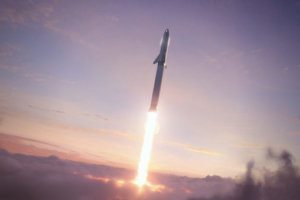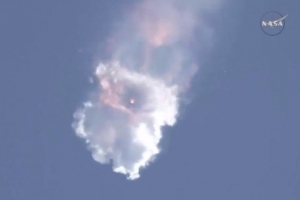SpaceX’s Mars plans focus on interplanetary transportation, not building human habitats
 Space Exploration
Space Exploration

 Space Exploration
Space Exploration
SpaceX’s Mars plans focus on interplanetary transportation, not building human habitats
 News
News
A SpaceX Falcon 9 rocket to the International Space Station (ISS) has exploded within a few minutes of launching
[fototag id=”lunardriver”]
Mouse over the icons for more information
Illustration by Jay Wong
Words by Jonathan O’Callaghan
One of the arguments for colonising the Moon is that it contains a lot of material that may be useful not only on the Moon itself, but also back on Earth. This includes things like helium-3, an isotope of helium that some say could be used as fuel in future nuclear fusion power plants to provide a huge new source of energy.
If we are to colonise the Moon then we could do with an innovative and low cost way to regularly send this useful material back to Earth. After all, we don’t want to have to use numerous expendable rockets to continually transport cargo to and from the Moon.
So, with that in mind, some space enthusiasts have envisioned a railgun of sorts that would be able fire projectiles from the Moon to Earth. Using magnetic levitation, the structure would accelerate a payload to the necessary speed required to escape the gravity of the Moon and return to Earth, or perhaps rendezvous with a cargo spacecraft in lunar orbit for transportation to Earth. This concept was used in the 2009 movie “Moon”, with helium-3 being mined on the Moon and sent to Earth by such a machine, known as a lunar mass driver.
A lunar mass driver is basically a long tube along which a payload is accelerated using electromagnets. Rather than relying on expendable fuel like rocket propellant, a mass driver on the Moon could run on solar power. The idea of a mass driver is that when a payload is accelerated to a speed greater than the escape velocity of the Moon (2.4 kilometres or 1.5 miles per second), it will be released from the tube and travel into lunar orbit, where it can be picked up by a larger cargo spacecraft for use in space or transportation to Earth. Rather than sending large payloads, a lunar mass driver will launch multiple small payloads, possibly several per second depending on its design.
These proposals have been considered for use on Earth, but the lower gravity and lack of atmosphere on the Moon makes it a much more desirable location. Creating a mass driver on Earth that could propel a payload into orbit around our planet would be incredibly difficult. To reach and maintain low Earth orbit, for example, a spacecraft or payload needs to have a velocity of about 7.8 kilometres (4.8 miles) per second, or 28,000 kilometres (17,400 miles) per hour, and it would also have to contend with the Earth’s atmosphere and its relatively strong gravitational pull. By comparison, the Moon has no atmosphere and much lower gravity, meaning a payload can more easily be accelerated to the speed required to escape the Moon.
A lunar mass driver is, of course, something very much still in a concept stage. Few actual experiments have been carried out on the possibility of building any sort of mass driver, but if we are to one day colonise the Moon building such a structure could be imperative for the transportation of useful material to Earth.
How a magnetic railgun could one day launch material from the Moon to Earth